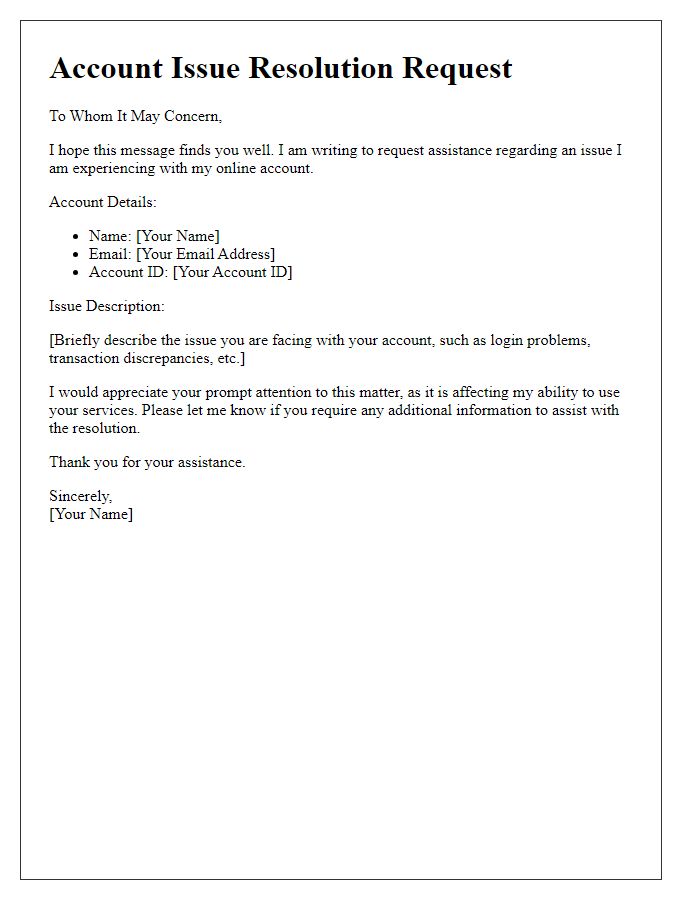Are you tired of facing issues with your online accounts that just don't seem to get resolved? You're not aloneâmany people experience frustrations with customer service when it comes to accounts, whether it's billing disputes or login problems. In this article, we'll explore an effective letter template that you can use to express your complaints clearly and professionally. Stick around to discover how to make your voice heard and get the results you deserve!

Clear subject line
When submitting an online account complaint, a clear subject line is essential for efficient communication. An effective subject line could read: "Account Access Issue: Urgent Attention Required." This succinctly communicates the nature of the problem (account access) and indicates the urgency (urgent attention required), ensuring that the recipient understands the priority of your concern right away. Include specifics, such as account username or email address, to facilitate a quicker response. Highlighting key details in the subject line enhances the visibility of the issue, allowing customer support teams to categorize and address complaints more effectively in their workflow.
Detailed account information
Online account complaints can arise due to various reasons, including unauthorized access or billing discrepancies. Account information should include the username, email address linked to the account, and a detailed description of the issue, such as account lockouts or unexpected charges. Providing timestamps of incidents can enhance the context, especially if the problem occurred during a significant event, like a holiday promotion. Screenshots of error messages or unusual activities can serve as supporting evidence. Engagement with customer support representatives and documentation of previous communication can assist in tracking resolution efforts. User experiences can vary based on the platform, such as social media sites or e-commerce retailers, emphasizing the importance of clear and concise details in the complaint.
Specific issue description
An online account security breach can lead to unauthorized access and potential identity theft. For instance, in May 2021, over 500 million users of the social media platform Facebook experienced a significant data leak, exposing personal information including emails and phone numbers. This breach can compromise sensitive data, resulting in phishing scams or fraudulent activities. Additionally, weak password management practices exacerbate vulnerabilities; utilizing passwords longer than 12 characters, containing a mix of symbols and numbers, can significantly enhance security. Prompt reporting of any suspicious activity to customer support is crucial in mitigating further risks and protecting personal information from cybercriminals.
Desired resolution
In online account management, users often encounter issues leading to a need for effective complaint resolution. Common problems may include unauthorized access, incorrect billing, or account lockout. A desired resolution often involves prompt restoration of account access, correction of billing discrepancies, or enhanced security measures such as two-factor authentication. Users may expect a swift response time, often within 24 to 48 hours, from customer support teams based in locations like the United States or Europe, ensuring adherence to privacy regulations such as GDPR. Moreover, compensation in the form of credits or discounts may be sought as goodwill for the inconvenience caused.
Contact information
Online account complaints often require specific contact information to facilitate resolution. This can include an email address, typically the one linked to the account such as example@example.com, a phone number for direct communication, for example, +1-800-555-0199, and potentially a physical address if correspondence is needed. Additionally, providing the username associated with the account can expedite the process; for instance, a username like "user12345" may be necessary for verification purposes. Including account-related details, such as the date of the complaint (e.g., October 1, 2023) and a brief description of the issue, enhances the clarity and effectiveness of the communication.













Comments